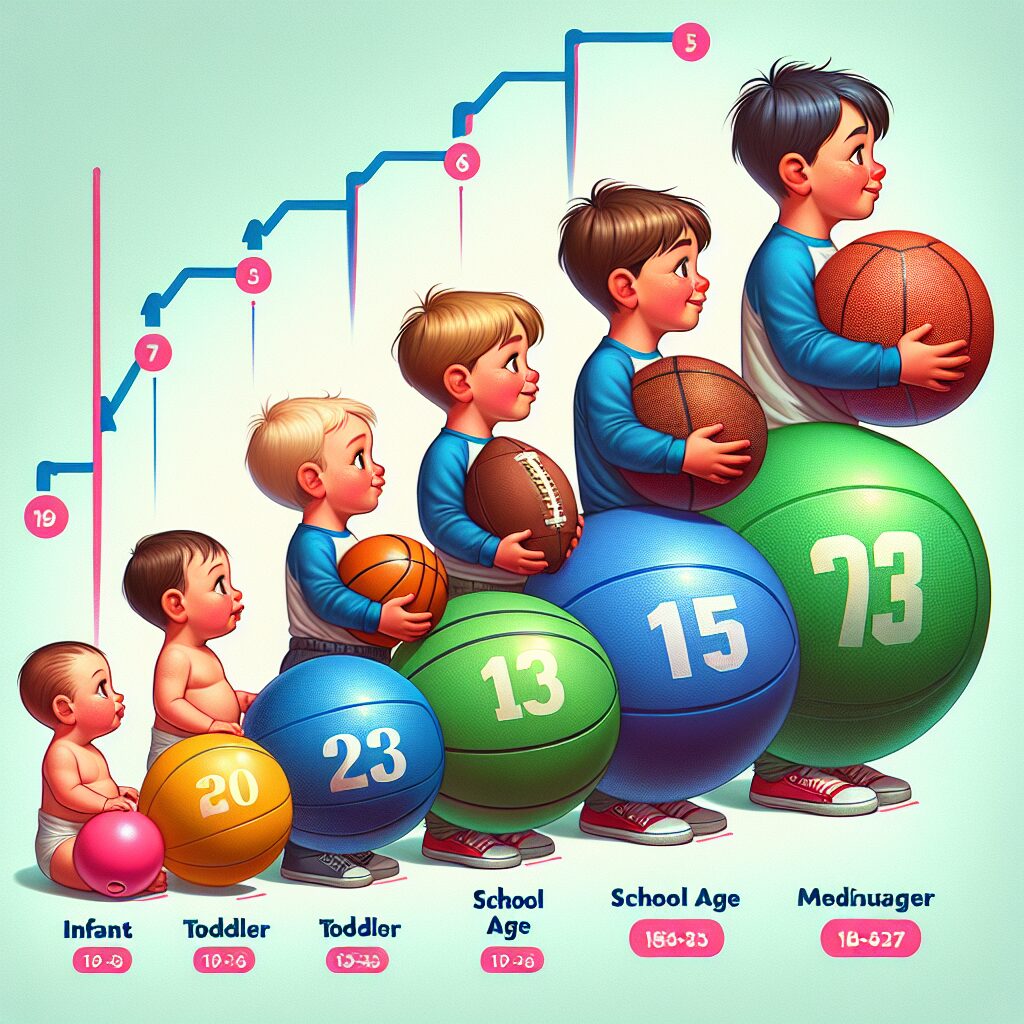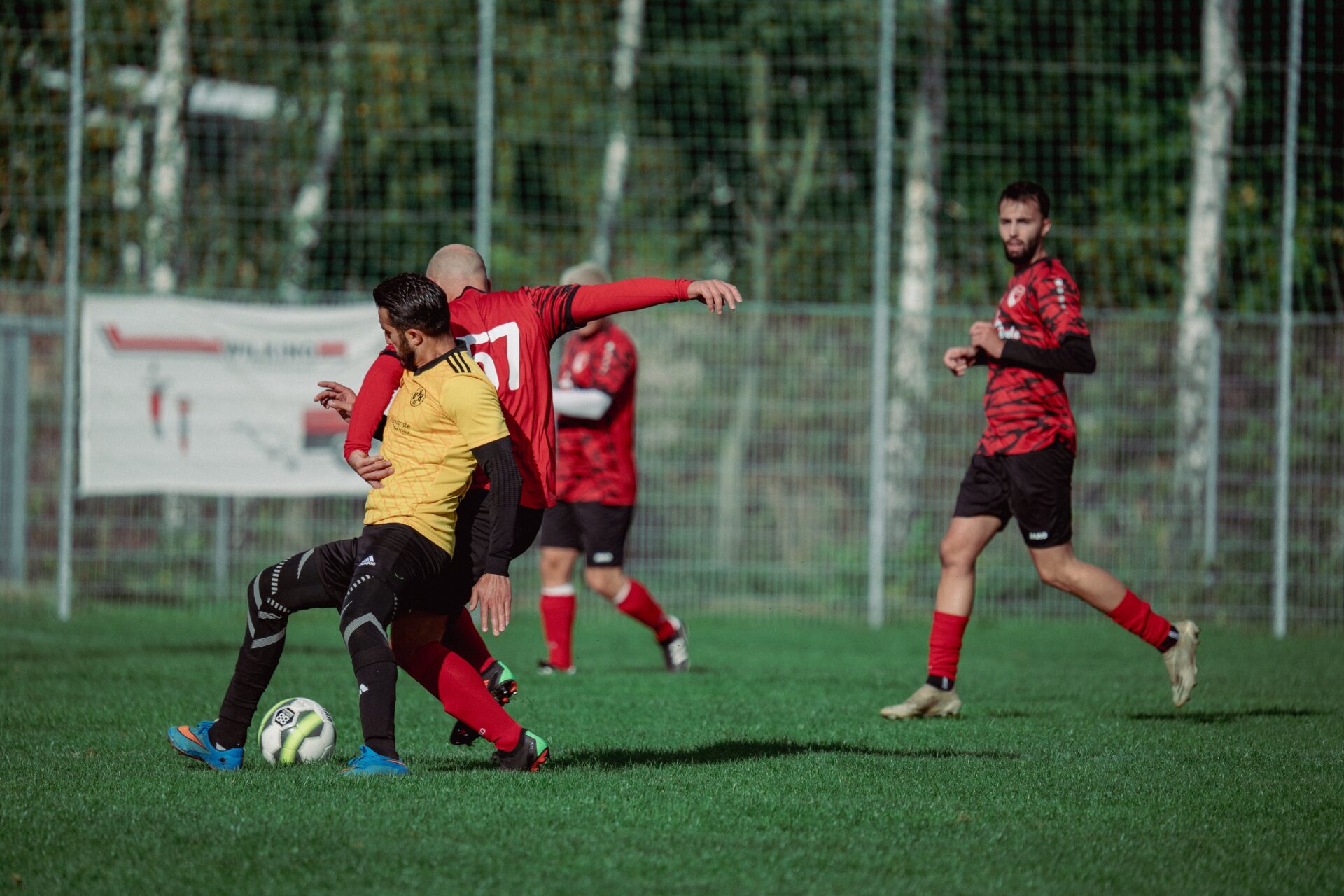Player Age and Ball Weight: Age-Appropriate Choices
When it comes to sports, age-appropriate equipment is crucial for the safety and development of young players. This holds particularly true for sports that involve balls, such as soccer, basketball, and tennis. The weight of the ball can have a significant impact on a child’s ability to properly control and engage with the game. From reducing the risk of injury to enhancing skill development, understanding the correlation between player age and ball weight is essential for parents, coaches, and players themselves.
In youth sports, the age of the players directly influences the appropriate weight of the ball they should use. As children grow and develop, their physical strength, coordination, and motor skills also evolve. Consequently, using a ball that is too heavy or too light can hinder their progress and potentially lead to frustration or injury. For instance, a young child attempting to kick a heavy soccer ball may struggle to generate enough force, affecting their ability to accurately pass or shoot. On the other hand, using a ball that is too light may result in decreased control and difficulty in performing precise movements.
Throughout this article, we will explore the importance of selecting age-appropriate balls and how the weight of the ball can impact a child’s performance. We will also discuss specific guidelines and recommendations for various age groups, ensuring that players, parents, and coaches are well-informed on making the right choices. By understanding the relationship between player age and ball weight, we can optimize the learning experience, promote skill development, and most importantly, prioritize the safety and enjoyment of young players in their chosen sports.
Key Takeaways
1. Age-appropriate ball weight is crucial for player development and injury prevention. The weight of the ball should correspond to the player’s age and physical capabilities to avoid excessive strain on their developing muscles and joints.
2. Younger players, aged 5-8, should start with lighter balls to enhance skill acquisition and minimize the risk of injury. Using smaller and lighter balls allows for better control, coordination, and technique development.
3. As players progress in age, they should gradually transition to heavier balls to build strength, power, and accuracy. This gradual increase in ball weight reinforces proper technique and helps players adapt to the physical demands of higher-level play.
4. Paying attention to the weight of the ball used during training sessions and matches is essential since it directly affects a player’s ability to execute skills and maintain optimal performance. Coaches and parents should consider choosing the right ball weight based on the player’s age and skill level to promote skill development and prevent injuries.
5. Regular evaluation of the appropriateness of the ball weight for a player’s age and developmental stage should occur to ensure continued progress. As players grow and their physical abilities change, adjustments to ball weight may be necessary to optimize their training and playing experience.
What Are the Age-Appropriate Choices for Player Age and Ball Weight?
1. Understanding the importance of age-appropriate choices
When it comes to sports, selecting the right equipment is crucial for the safety and development of young players. In the case of player age and ball weight, it is essential to understand the significance of age-appropriate choices to ensure a positive and productive sporting experience.
2. The impact of player age on ball weight selection
The age of a player directly affects their physical capabilities and skill level. It is essential to match the ball weight with the player’s age to promote proper technique, prevent injuries, and optimize performance. Let’s explore the different age groups and corresponding ball weights in detail:
2.1 Age Group: 3-5 years
For young beginners in the 3-5 age group, it is recommended to use lightweight balls weighing around 6-8 ounces. These balls are specifically designed to enhance coordination, promote skill development, and enable easy gripping for small hands.
2.2 Age Group: 6-8 years
As players grow and develop their motor skills, a slightly heavier ball between 8-10 ounces is suitable for the 6-8 age group. This weight allows for improved control, better muscle development, and enhances the ability to generate power while maintaining accuracy.
2.3 Age Group: 9-12 years
In this age range, players are becoming more skilled and physically capable. Using a ball weighing 11-13 ounces allows them to further refine their technique, develop strength, and adapt to a size and weight similar to an adult ball. This prepares them for advanced play in the future.
2.4 Age Group: 13+ years
Teenagers and adult players require full-size and regulation-weight balls ranging from 14-16 ounces. These balls provide the necessary challenge, help in refining skills, and ensure a seamless transition to competitive levels.
3. Considerations beyond player age
While player age is a primary factor in selecting an appropriate ball weight, it is essential to consider individual variations and circumstances. Some additional factors that may influence the choice of ball weight include:
3.1 Physical strength and maturity
Players with above-average physical strength and maturity may handle a slightly heavier ball even at a younger age. Conversely, individuals with specific physical limitations might benefit from using a lighter ball to avoid strain.
3.2 Skill level and playing experience
Experienced players who have developed their skills might feel comfortable using a slightly heavier ball to challenge themselves and push their boundaries further. However, beginners should stick to the recommended ball weight range for their age group to establish a solid foundation.
3.3 Sport-specific requirements
Depending on the sport, there might be specific guidelines or regulations regarding ball weight for different age groups. It is crucial to familiarize oneself with these rules to ensure compliance and fair play.
4. Numbered guides for selecting age-appropriate ball weight
- Understand the player’s age and determine the corresponding age group.
- Research the recommended ball weight range for the identified age group.
- Consider any additional factors such as physical strength, skill level, and sport-specific requirements.
- Try out different ball weights within the recommended range and assess the player’s comfort and performance.
- Seek guidance from coaches, trainers, or sports experts for further assistance in selecting the optimal ball weight.
- Regularly reevaluate the ball weight choice as the player progresses and reaches new skill and age milestones.
Choose Age-Appropriate Ball Weight for Optimal Performance!
Player Age and Ball Weight: Age-Appropriate Choices
FAQ:
What is the significance of player age when it comes to choosing the right ball weight?
Player age plays a crucial role in determining the appropriate ball weight. Younger players who are still developing their strength and coordination generally require lighter ball weights to avoid strain and injury. As they grow older and gain more experience, they can gradually transition to heavier balls that provide greater challenge and enhance their skills.
What are the recommended ball weights for players under the age of 10?
For players under the age of 10, it is advisable to opt for lighter ball weights to ensure their safety and prevent any potential joint or muscle strains. Typically, a ball weight between 6 to 8 pounds is suitable for young players within this age group.
At what age should players consider transitioning to heavier ball weights?
There is no specific age requirement for transitioning to heavier ball weights since it can vary depending on the individual player’s strength and abilities. However, as a general guideline, most players start gradually increasing ball weight between the ages of 10 to 12, as they have typically developed sufficient strength and control necessary for handling slightly heavier balls without straining themselves.
Can using an inappropriate ball weight lead to injuries?
Using an inappropriate ball weight for a player’s age can indeed increase the risk of injuries. For younger players, trying to handle overly heavy balls can strain their muscles and joints, potentially leading to injury. Similarly, older players who use excessively light balls may not develop the necessary strength or control required for proper technique, increasing their susceptibility to injuries.
What factors should be considered when determining the appropriate ball weight for players?
When determining the appropriate ball weight, several factors should be taken into consideration. These include the player’s age, physical strength, skill level, and playing experience. It is essential to strike a balance between providing a challenge that promotes growth while ensuring the player’s safety and reducing the risk of injury.
How does using the correct ball weight affect a player’s performance?
Using the correct ball weight can significantly impact a player’s performance. A ball that is too light can lead to decreased power and control, limiting the player’s ability to execute certain shots. On the other hand, using a ball that is too heavy can cause muscle fatigue and reduce precision. The appropriate ball weight helps players develop the necessary skills and technique for better performance.
Are there any standards or guidelines for age-appropriate ball weights?
While there are no universally set standards for age-appropriate ball weights, various sports organizations and youth development programs provide guidelines based on research and experience. These guidelines aim to ensure the safety and development of young players by recommending suitable ball weights for each age group.
Can a player’s ball weight preference contradict the recommended guidelines?
Yes, a player’s personal preference for ball weight may occasionally contradict the recommended guidelines. Some players may find they perform better or feel more comfortable using a slightly different ball weight. However, it is crucial to consider the recommended guidelines as a starting point and adjust accordingly based on individual needs and abilities.
Does using heavier ball weights guarantee better performance for experienced players?
Using heavier ball weights does not guarantee better performance for experienced players. While heavier balls can offer increased resistance, facilitating strength and muscle development, using the appropriate ball weight is crucial. Each player has their own optimal ball weight that provides the right level of challenge without compromising technique or risking injury.
How frequently should ball weights be adjusted for growing players?
Ball weights should be adjusted for growing players periodically as they develop physically. It is recommended to reassess ball weight every 6 to 12 months to ensure it aligns with the player’s strength and growth. As the player’s abilities improve, gradual adjustments may be necessary to support their progress and maintain the appropriate challenge level.
Final Thoughts:
Choosing the right ball weight based on a player’s age is a vital consideration in promoting safety, skill development, and overall performance. As players grow and progress through different age groups, it is essential to regularly evaluate and adjust ball weights accordingly. Striking the right balance between challenge and comfort ensures optimal growth and enjoyment of the game for players of all ages.
Ultimately, each player is unique, and while guidelines and recommendations provide helpful starting points, personal preference and individual abilities should also be considered. Whether it’s starting with a lighter ball to build strength or gradually transitioning to heavier weights to enhance skills, adaptation to the appropriate ball weight plays a crucial role in maximizing a player’s potential and long-term success.




